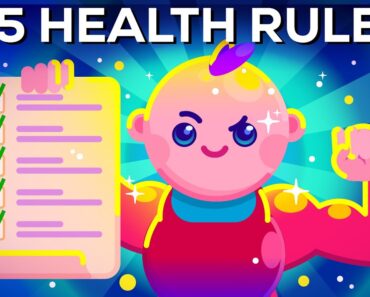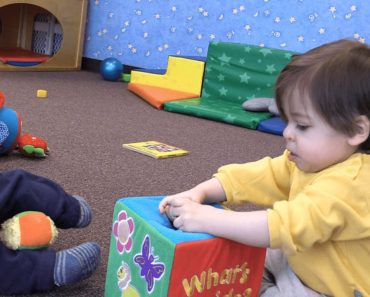When you touch the roof of a newborn’s mouth with a finger, pacifier, or nipple, have you noticed your baby instantly sucking it? This involuntary action is the sucking reflex and is present in almost all full-term babies and some pre-term babies.
The sucking reflex is one of the most important reflexes in a newborn baby. It acts as a determinant of the newborn’s facial growth, as it involves the facial muscles (1). And more importantly, it is a source of nourishment and provides a calming effect on the baby (2).
The ability to suck involuntarily varies from baby to baby. Some babies may be better at it, as this depends on various factors, such as how early the baby is born. Read on as we give you some noteworthy information about the sucking reflex in babies.
When Does The Sucking Reflex Develop In Babies?
Studies suggest that the first movements in the oral area happen on the 60th day of intrauterine (inside the uterus) development. This is followed by the suckling action in the 10th week and swallowing in the 12th week (1). This is why you may find your baby sucking their thumbs or hands during the routine ultrasound scans.
However, premature babies may not develop sucking reflexes as they are delivered early. Oral feeding requires integrating physical and neurophysiological functions, which may not be fully developed in preterms. It may take some time for premature babies to coordinate the suck-swallow-breathe (SSwB) process, and they may master it by the time they reach their original due dates (3).
Next, let us have a look at the mechanism of the sucking reflex.
Mechanism Of The Sucking Reflex
Babies suck on the breasts to express milk for nourishment (nutritive sucking) or for the comfort of breastfeeding (non-nutritive sucking). Babies under the age of three months may keep sucking even when they are not feeding (2).
Whether it is nutritive sucking or non-nutritive sucking, the sucking reflex in babies consists of two components — suction and expression.
Suction: This is characterized by the generation of intraocular pressure with the closure of nasal passages by the soft palate, tightening of the lips around the breast or bottle, and lowering of the lower jaw. It helps increase the volume of the oral cavity to draw the milk.
Expression: This is characterized by the compression of the breast or nipple by the tongue and against the hard palate to eject milk into the mouth (3).
So, one suck comprises one suction and expression. Studies have found that in mature term infants, nutritive sucking occurs at a frequency of one suck per second, while non-nutritive sucking occurs at a frequency of two sucks per second (3).
Full-term babies are born with quite a few reflexes, which help them nourish and sustain themselves outside the womb. One such reflex is rooting, which may appear similar to the sucking reflex, but is not. Read on to find out how these are different.
Sucking Reflex Vs. Rooting
Both rooting and sucking reflexes are essential for feeding. The rooting reflex is characterized by the movement of the infant’s head and tongue towards an object that touches the cheek or the corners of the mouth. This reflex helps babies identify and latch on to the breast or the bottle nipple. The rooting reflex disappears around seven months of age.
On the contrary, the sucking reflex helps express milk from the nipples. This reflex lasts until 12 months. This does not mean the baby cannot suckle anymore, but by this time, the baby would have learned to suck and feed without the need for the reflex (1).
Testing Your Baby’s Sucking Reflex
It is essential to test your baby’s sucking reflex as abnormalities in sucking may indicate neurological issues.
Place a clean finger, pacifier, or nipple inside the baby’s mouth. If the reflex is fully developed, the baby will instantly place the lips around the item and start sucking rhythmically.
If you notice any deviations, consult your pediatrician, as the sucking reflex is essential in nourishing the baby.
Sucking Problems In Premature Babies
Babies who are delivered before the gestation period may have poor sucking reflexes due to the following reasons:
- Difficulty in synchronizing the suck-swallow-breathe (SSwB) technique
- Insufficient sucking patterns
- Weak lip seal
Preterm babies would not be able to breastfeed or bottle-feed and are provided nutrients through feeding tubes.
In most preterm babies, these feeding difficulties are temporary and tend to resolve when the baby nears the actual due date (4). Here are a few ways in which you can help your premature baby overcome feeding difficulties.
- If your preterm baby is in the NICU, seek the nurse’s help to stimulate your baby’s oral reflexes.
- For a positive feeding experience, you can offer a pacifier or allow them to suck their fingers and orally explore them.
- Express breastmilk or mix formula milk, dip the pacifier or their fingers into it, and offer it to the baby. This may help in familiarizing them with the taste and smell of milk.
- If your baby is being fed through feeding tubes, you can express the breastmilk and ask the nurse to feed it through the tube.
- Once your baby sustains without the feeding tubes, breastfeed them at every opportunity possible.
- Until the baby learns to coordinate the suck-swallow-breathe (SSwB) process, use slow flow nipples to avoid overwhelming the baby with high milk flows.
- Try pacing. It is an intervention that helps in successful feedings. It is done by shifting the baby slightly forward after every three to five sucks so that the milk drains out of the nipple. If you are bottle-feeding, tilt the bottle down. Pacing gives the baby a break and helps them understand when to stop sucking to catch a breath (5).
- Use the kangaroo care method, which provides skin-to-skin contact and stimulates breast milk production. It also helps the baby familiarize with the sucking and the mother’s heartbeat and touch (6).
Try these interventions only if your preemie is stable and is ready to take milk orally. Do not get discouraged if your efforts do not yield results during the initial days. Even though your baby is not feeding, they are bonding with you, and that is progress.
Some preterm babies may also show feeding difficulties after getting discharged from the NICU. In such cases, it is best to consult a lactation consultant, who can help you with the position, latching issues, and any other feeding difficulties.
Apart from the sucking and rooting reflexes, babies are born with other reflexes. Read on to know more about them.
Other Baby Reflexes
Baby reflexes are essential for a baby to adjust and survive outside the womb. Full-term babies are born with these reflexes, whereas preterm babies develop these a little later. Talk to your doctor if you find any abnormalities in your baby’s reflexes.
Along with the sucking and rooting reflexes, some of the other baby reflexes include:
- Moro reflex: Also known as the startle reflex, it is the baby’s startling response to loud noises or movements. The baby would throw their head and extend their arms and legs to respond to a strong stimulus. Usually, the Moro reflex is accompanied by crying. This reflex lasts until the baby is two months old.
You can test this reflex by exposing your baby to mild-to-loud noises, such as a dog barking or you talking loudly. If your baby startles or stretches their arm and legs, it is a sign of the Moro reflex.
- Grasp reflex: When you stroke your baby’s arm, they would automatically close their fingers and grasp your finger. The grasp reflex of the hands lasts for five to six months, and that of the toes lasts until nine to twelve months.
- Tonic neck reflex: In this type of reflex, when the baby’s head is turned to the left, the left arm is stretched out, and the right arm bends up at the elbow. You can test this by gently turning their head and watching the arm movement. This reflex lasts until five to seven months.
- Babinski reflex: When you stroke the baby’s sole, the big toe bends towards the top of the foot, and the other toes fan out. Any abnormalities in this is usually a sign of central nervous system disorders. This reflex may last until the child is two years old (7).
- Stepping reflex: If your baby tends to take steps or dance when held upright with the feet touching a solid surface, it is a sign of the stepping reflex. This reflex lasts about two months (8).
Reflexes are a baby’s tools to survive outside the womb during the first few weeks. The sucking reflex ensures your baby gets enough nourishment to thrive and reach their developmental milestones. However, a few babies may face issues in developing the sucking reflex. If you notice any feeding difficulties in your newborn, do not hesitate to talk to your pediatrician or a lactation consultant.

































